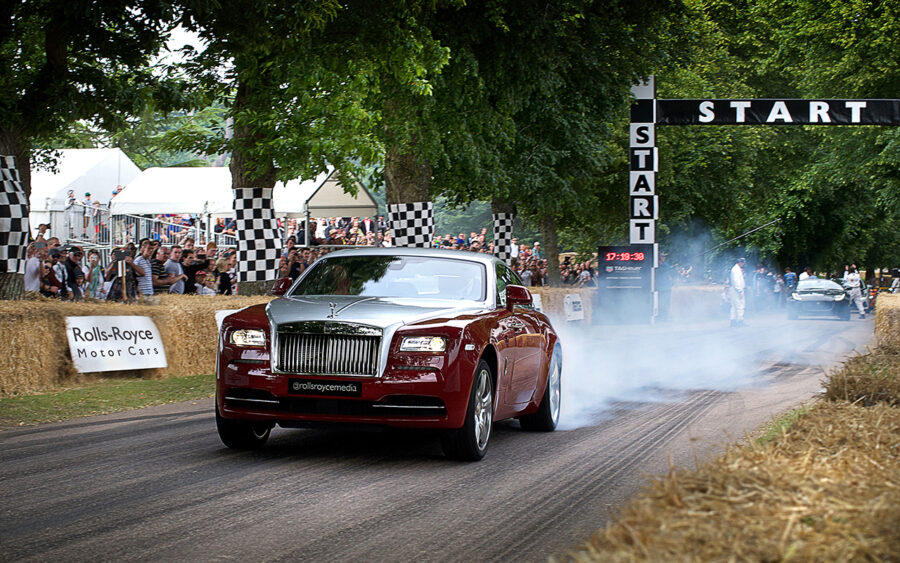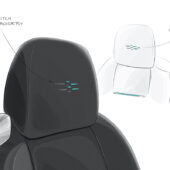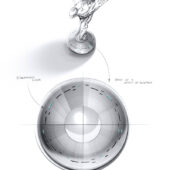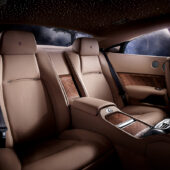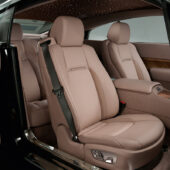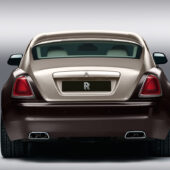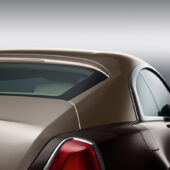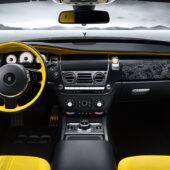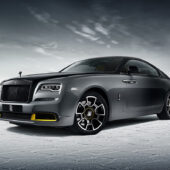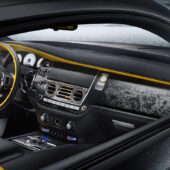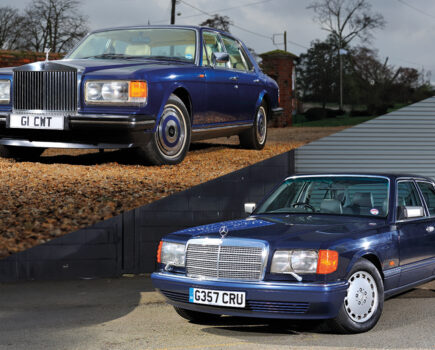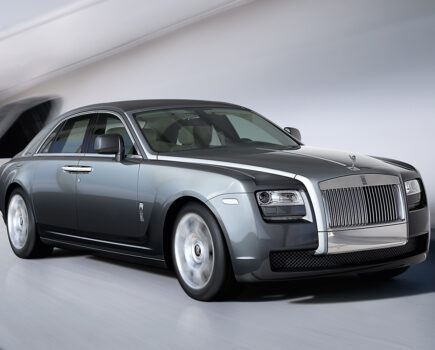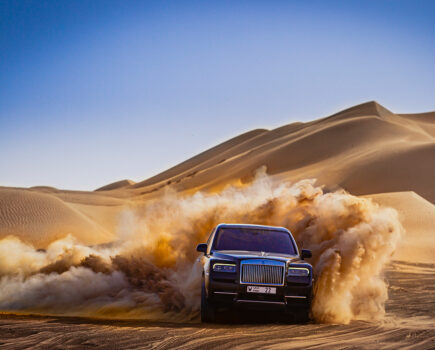The Rolls-Royce Wraith marked the end of a V12 coupe legacy for the brand, sporting a pre-war nameplate and huge performance. Here’s how it came to be
Words: Jon Burgess
Historically, Rolls-Royce’s cars were famed for their endurance and strength rather than the outright speed and sportiness eventually achieved by the Wraith of 2013. Founder, Charles Rolls won the Isle of Man Tourist Trophy in 1906 in a Light Twenty; the Scottish Reliability Trials made an icon of the only true 40/50 Silver Ghost, ‘AX 201’, and Laurence of Arabia’s ‘Blue Mist’ served him well during the Arab Revolt.
By the mid-60s, the still-born Austin-Healey 4000 was the closest Rolls-Royce had got to producing a sports car: its alloy FB60 engine, derived from its military line of B Series four-, six- and eight-cylinder units, was to extend the lifespan of the ‘Big Healey’ into the 70s by giving a nowhere-near-up-to-capacity engine line (intended to supply the Vanden Plas 4 Litre R) work.
Killed for political reasons (BMC/BLMC baulked at further royalties to be paid to the Healey family, and the increasing pressure the 4000 would have put on the Jaguar E-type), Royce returned to the task at hand: its first unitary bodied saloon, the Silver Shadow, powered by a new V8.
It much preferred to talk of performance in ‘adequate’ or ‘sufficient’ terms, hiding the bald figures of its L-Series V8 unless obligated under law, when Germany’s DIN declarations forced its hand. During the days of the SZ cars, turbocharged Silver Spirits were very much a means to an end, with the equivalent Bentleys taking the lion’s share of performance buyers.

Volkswagen’s acquisition of the L-Series V8 saw Bentley push the boundaries of speed and luxury further than ever before; after the dust had settled over the future of both Bentley and Royce marques in German hands, and BMW’s licencing of the double-R began, a new V12 future powered those cars emerging from Goodwood.
V12s had, of course, played a role in Royce’s pre-war range: the Phantom III used an overhead-valve, 7.3-litre V12: between the war years, the aero division’s R (R-Type) V12s had powered Supermarine’s S6B to victory in the 1931 Schneider Trophy.
Malcolm Campbell and George Eyston used Royce Rs to lasting effect in their Blue Bird and Thunderbolt land speed record cars. The historic prestige of such engines, as well as their inherent smoothness and complexity, was not lost on BMW, whose first Royce, the Phantom VII of 2003, used a 6.75-litre V12 derived from its current 7 Series range.
The aeronautical and motor car divisions of Rolls-Royce had long been separate, the latter made a separate entity in 1972, but the relationship between both companies was still significant – enough for an aero-engine deal between the former and BMW for the Germans to regard a takeover of Rolls-Royce Motors as a foregone conclusion.
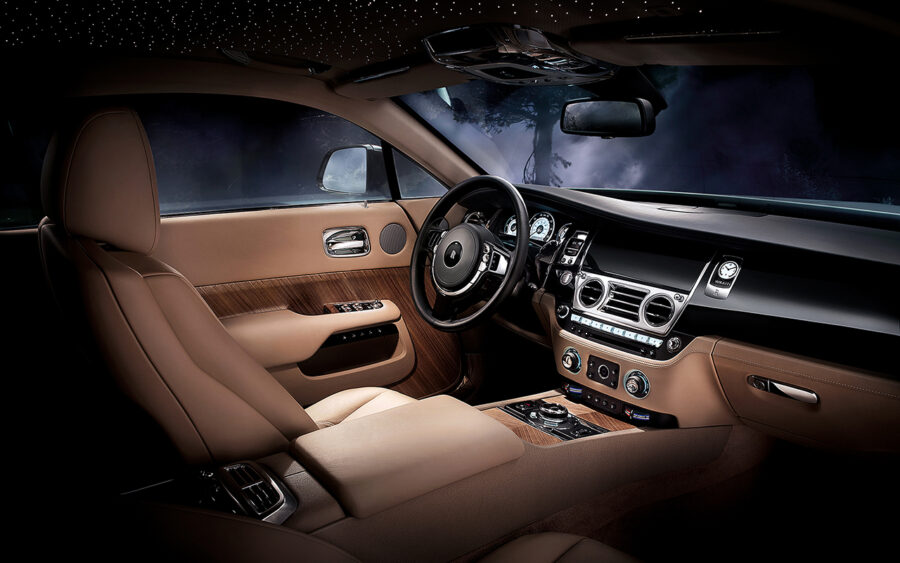
Alas, history split Bentley and Royce in 1998, but the exclusivity of a V12 to counter the legacy of an upgraded and revived L-Series V8 (by then the intellectual property of Volkswagen) was an obvious choice.
That the Wraith revived a pre-war nameplate is unsurprising; that most unpleasant of ghosts, shocking in their urgency and origin, was curtailed by World War Two after only 491 units were built.
Post-war, the nameplate had returned on the post-war Silver Wraith (1946-1958), with the Silver Wraith II serving as a long-wheelbase Silver Shadow from 1976 to 1980. In 2023, the Wraith and Dawn faced a (perhaps untimely) demise after a decade, to be succeeded by the all-electric Spectre.
None of this mattered in 2010, of course, when the Ghost saloon, the more accessible ‘entry-level’ Royce, entered production, based on the F01-generation BMW 7 Series.
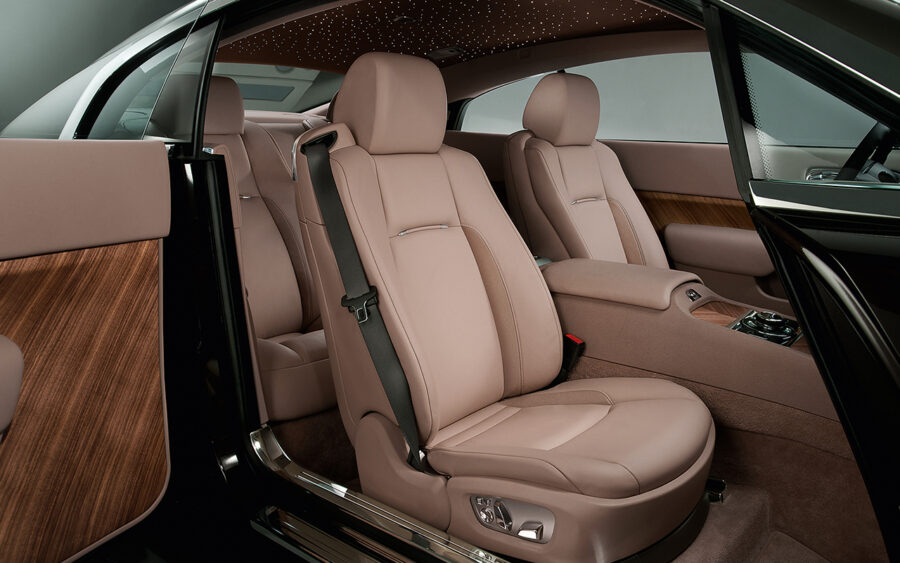
The Ghost platform, suitably outfitted for Royce’s purposes, sired the 2013 Wraith, and 2015 Dawn, the latter being Royce’s last petrol-powered convertible (the earlier Phantom VII-based Phantom Coupe, and Phantom Drophead Coupe continued until 2016 and 2017, respectively).
Wraith designers, Pavle Trpinac and Andreas Thurner, paid close attention to Royces of yore, citing the pre-war Barker-bodied Phantom II Continental and post-war Cloud I saloon as key influences.
Seeking solace in the pre-war golden age of fastbacks, the Wraith became the firm’s first GT; at pains to describe its new model not as an outright sportster, it instead pushed the notion of the Wraith as a driver’s car, something the keener Royce owner would drive, rather than be driven in.
Close attention was paid the vertical features of both cars; refinement of Wraith’s shape determined a short front and long rear overhang. The classic proportions of both machines was emphasised by a dramatic C-pillar and a roof height determined by the height of another wheel and tyre stacked above the car’s wheels fore and aft. Lastly, a so-called ‘waftability line’ defined on both Phantom II and Cloud I by the sweep of their front wings down to sill level, was incorporated into Wraith’s door surfacing.
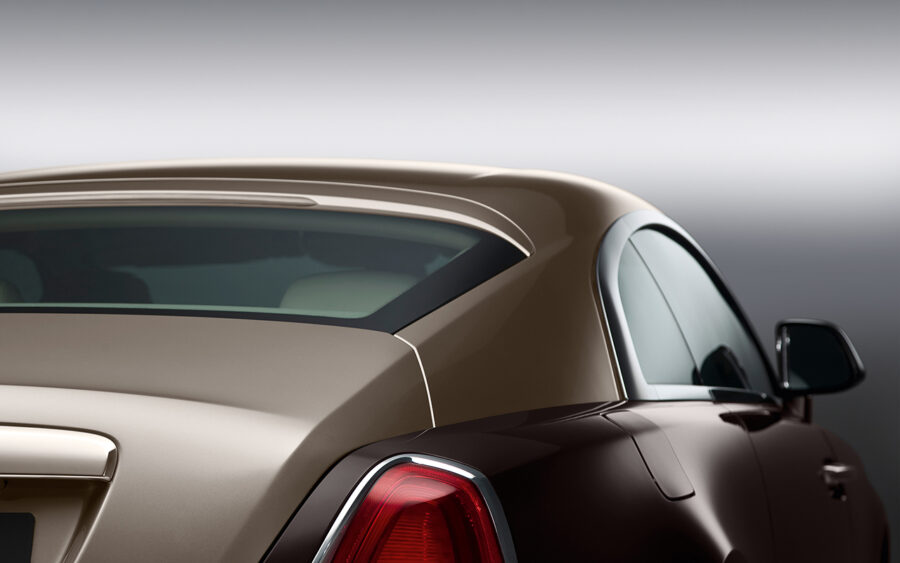
To achieve the shape, Royce removed the Ghost’s two rear doors, curtailed the wheelbase by 183mm, broadened the rear track by 24mm and effected a 50mm roof chop. The Ghost’s same 6.6-litre, twin-turbo V12 saw a 59bhp increase to 624bhp at 5600rpm, complete with a 15lb/ft peak torque boost, with 590 lb/ft of twist available at 1500 revs.
Despite Royce’s protestations that Wraith was not a sports car, further work went into theshell to make it stiffer, compensating for a lack of a B pillar. While the Ghost’s air suspension was retained, stiffer spring and damper settings were specified alongside a quicker steering rack, now with three turns lock to lock compared to the Ghost’s 3.2.
The results were dramatic: despite being pegged to a 155mph top speed, the 0-60 dash came and went in 4.4 seconds, outpacing any Royce two door to date, including the Phantom Coupe, and Corniche V.
By 2015, Wraith was ready to join the Black Badge programme, joined by the Ghost, and its related-but-85-per-cent-dissimilar convertible cousin, the Dawn, at the Geneva Motor Show. Sales would not commence for another year, but, to gain the attention of a younger demographic who were relying more and more on the services of firms like Mansory and Onyx to customise their cars, Royce wanted to beat such firms at their own game.
Quite aside from the Bespoke programme, which would slowly reveal one-off Wraith commissions, Black Badge Wraiths looked far more aggressive, and offered more performance than a standard edition car.
21-inch carbon composite wheels helped foster a blacked out aesthetic, though Black Badge cars could be had in any colour of Xirallic paint and trim available to Royce’s Goodwood paint and interior shop, should the customer have specified. All of the previous brightwork bar the side windows and tail lights was blacked out; even the Spirit of Ecstasy was given a high gloss black makeover in a matching blacked out grille.
Under the skin, however, the Wraith Black Badge got more serious. Spring and damper rates for the air suspension went up again, and peak torque rose to 642 lb/ft, prompting thicker, stronger driveshafts, and faster power steering.
The fitted ZF eight-speed automatic, normally guided by the GPS to determine the correct ratio, was reprogrammed to respond faster in ‘low’ under hard acceleration: given the correct provocation, the box would hold the revs to redline.

2017 model year cars, many of them produced in 2016, saw a raft of gentle improvements to modernise the Wraith for its fifth birthday: similar to the Ghost Series II, Series II Wraiths received altered LED headlights, a facelifted front bumper and new suspension tuning.
A greater selection of wheel, trim and audio options was added to the standard range, while a trickle of Bespoke Wraiths continued to emerge from Goodwood. Bespoke would see a surge of commissions approaching lockdown, customising Royce’s entire range for different purposes.
2020 was also the year of the first Wraith special edition: the 50 unit Kryptos. With a name derived from ancient Greek (‘all that is concealed’), the specially trimmed, limited run Kryptos was a code-breaker’s dream vehicle.
Royce used its own asymmetric cipher to hide coded messages on the treadplates, Spirit of Ecstasy mascot base, headrests, headlining, transmission tunnel and passenger airbag cover; Goodwood had to intervene to help buyers when no-one came forward with an answer, by revealing that the letters on the base of the Kryptos’s mascot spelled out ‘Kryptos’.

The firm refused to be drawn on whether or not a price awaited the owner with enough skill to crack the code, known only to Royce’s Bespoke designer, Katrin Lehmann, and CEO, Torsten Müller-Ötvös. US YouTube channels Daily Driven Exotics, and Exotic Car Hacks, appealed to their audiences to try to unscramble the Kryptos code, rumoured to contain quotes from Alan Turing and Professor Stephen Hawking.
With the all-electric Spectre looming large in coupe and convertible firm, Wraith and Dawn were withdrawn from the US market in 2021, with Royce announcing their retirement by 2023.
Two further special editions were revealed in honour of record breaker Captain George Eyston, and whose V12-engined Thunderbolt cut across the salt lakes before World War Two. First to arrive was 2021’s Landspeed Collection: 35 Wraiths, adorned with the same silver, black and yellow colour scheme as Eyston’s Thunderbolt, quickly found buyers.
With production winding down to date (2023), the Wraith bowed out with one final ode to Eyston’s adventures, while also acknowledging the career of Malcolm Campbell, whose Blue Bird donated one of its R-type powerplants to the eight-ton, six-wheel Thunderbolt.
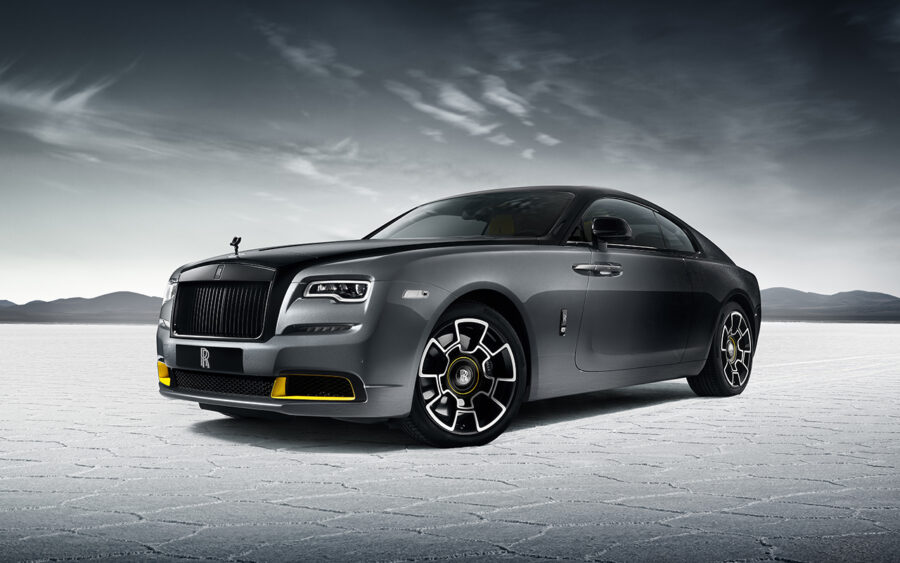
The result was the 12 unit Black Arrow (above), based on the already uprated Wraith Black Badge. 18 months of paint testing culminated in a graduated base colour – Celebration Silver at the front and Black Diamond at the rear – running the length of the car, with more yellow motifs appearing in the bumper, wheels, mascot base and radiator struts.
The yellow continued on the dashboard and steering wheel, with an exploded diagram of Thunderbolt’s R-type engines. The Black Arrow’s clock paid tribute to the 357.497mph record set by Eyston in 1938, while its headrests incorporate Campbell’s infinity symbol, last seen in special editions of the 2014 Phantom Drophead Coupe Waterspeed.
To wrap up a V12 legacy, few could have asked for more than the Wraith. A keen distillation of petrol-powered history, Royce’s fastest petrol powered coupe will never be forgotten.
Rolls-Royce Wraith timeline
2013
Ghost/BMW 7 Series based Wraith announced in January and shown to the public at March’s Geneva Motorshow. Most powerful and quickest factory Royce to date.
2015
Wraith joins Black Badge programme, alongside Ghost. Exterior alterations, more torque, larger wheels.
2016
Wraith Black Badge cars go on sale; first Bespoke Wraith (the one-of-one Porto Cervo) revealed.
A Wraith is demonstrated ‘up the hill’ at that year’s Goodwood Festival of Speed; it’s the sixth fastest in class.
2017
Wraith Series II released. Reshaped LED headlights (same as the Dawn and similar to the Ghost Series II), a new front bumper, upgraded suspension and new wheel and trim options made available.
2020
50-unit Kryptos Special Edition revealed; a special bumper, unique paint and special interior trim.
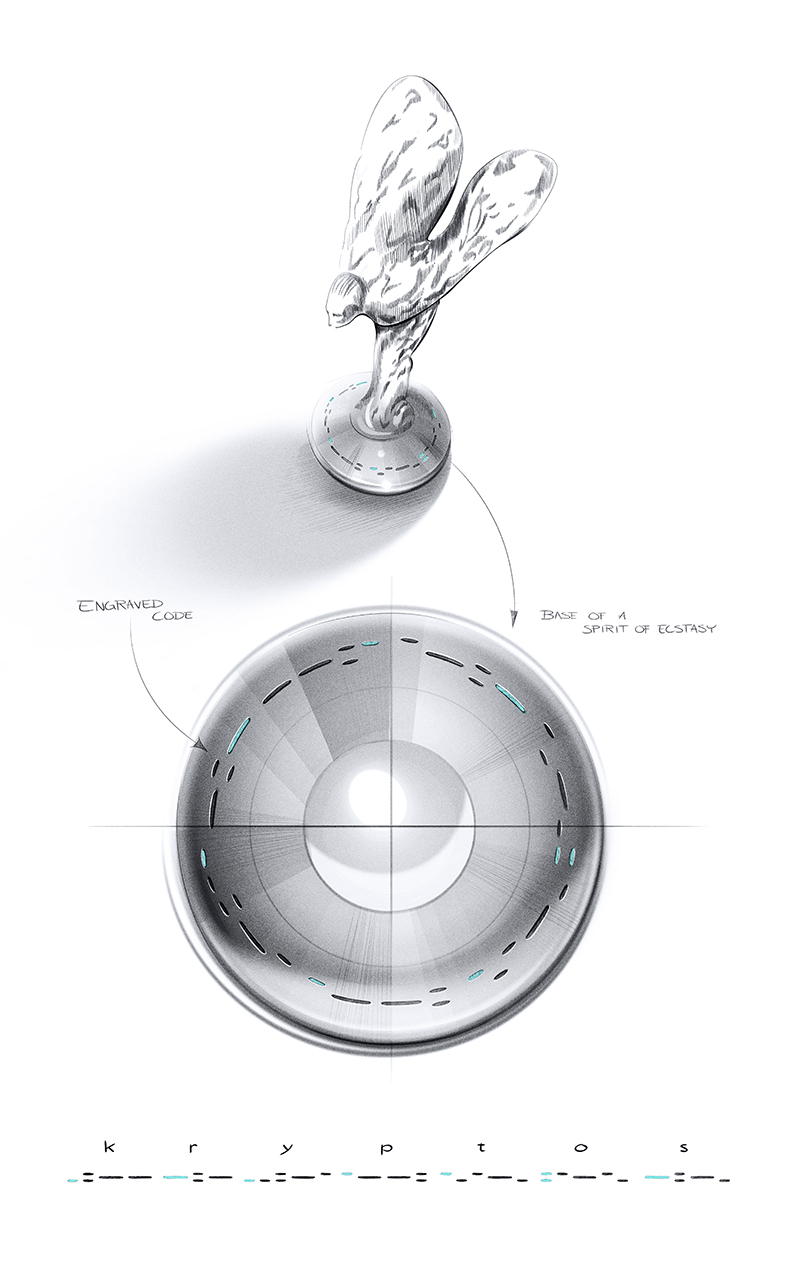
Second Bespoke Wraith revealed: ‘Wraith Inspired By Earth’, commissioned by Rolls-Royce Abu Dhabi.
2021
Rolls-Royce announces that Wraith and Dawn production to end in 2023.
Wraith and Dawn withdrawn from US market.
Wraith and Dawn Landspeed Collection, launched to commemorate record-breaker, Captain George Eyston for a limited run. 35 Wraiths and 25 Dawns commissioned; silver, black and yellow décor with a special interior recalls salt flat-conquering Thunderbolt of 1938.
2023
Wraith and Dawn production run down to fulfil existing orders before Spectre EV comes online.
Final limited edition Wraith revealed: Wraith Black Arrow, limited to 12 units again commemorating George Eyston’s Thunderbolt, similar in appearance to 2021’s Wraith Landspeed Edition. Based on the Wraith Black Badge with special paint, trim and inscriptions.

